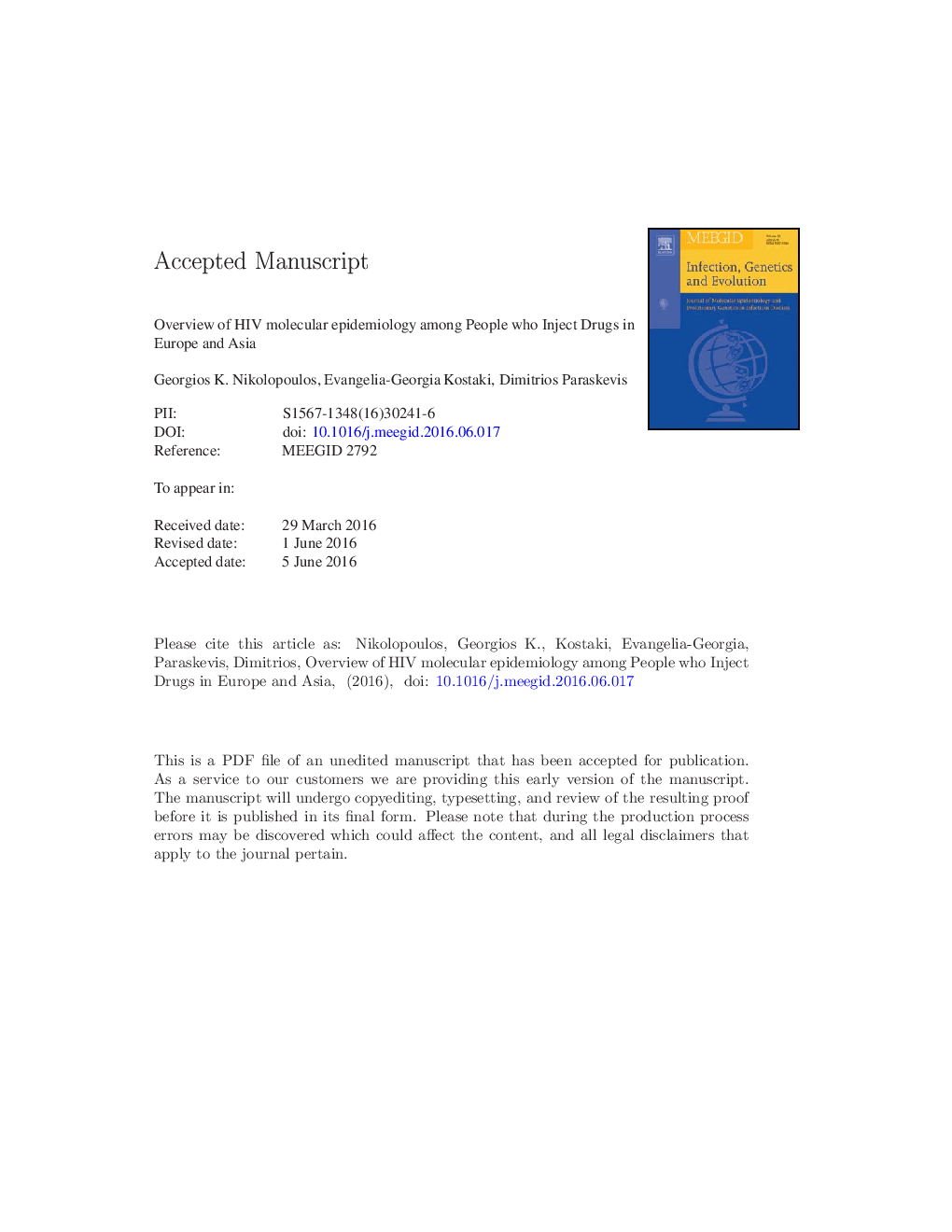| Article ID | Journal | Published Year | Pages | File Type |
|---|---|---|---|---|
| 5590717 | Infection, Genetics and Evolution | 2016 | 64 Pages |
Abstract
This review briefly summarizes the molecular epidemiology of HIV among people who inject drugs (PWID) in Europe and Asia. Following high transmission rates of subtype G and CRF14_BG among PWID in Portugal and Spain, two European countries, Greece and Romania, experienced recent HIV outbreaks in PWID that consisted of multiple transmission clusters including subtypes B, A, F1, and recombinants CRF14_BG and CRF35_AD. The latter was first identified in Afghanistan. Russia, Ukraine, and other Former Soviet Union (FSU) states are still facing the devastating effects of epidemics in PWID produced by AFSU (also known as IDU-A), BFSU (known as IDU-B), and CRF03_AB. In Asia, CRF01_AE and subtype B (Western B and Thai B) travelled from PWID in Thailand to neighboring countries. Recombination hotspots in South China, Northern Myanmar, and Malaysia have been generating several intersubtype and inter-CRF recombinants (e.g. CRF07_BC, CRF08_BC, CRF33_01B etc.), increasing the complexity of HIV molecular patterns.
Keywords
TMRCAFSUTASPSIVCDCDrug injectingMSMCRFsPWIDPrEPFormer Soviet Unionpeople who inject drugsMolecular epidemiologyAIDSTreatment as preventionAntiretroviral treatmenttime of the most recent common ancestorSubtypesWorld Health Organizationacquired immune deficiency syndromeCirculating recombinant formsMen who have sex with menARThuman immunodeficiency virusHIVSimian immunodeficiency virusPre-exposure prophylaxisWHOUNAIDS
Related Topics
Life Sciences
Agricultural and Biological Sciences
Ecology, Evolution, Behavior and Systematics
Authors
Georgios K. Nikolopoulos, Evangelia-Georgia Kostaki, Dimitrios Paraskevis,
